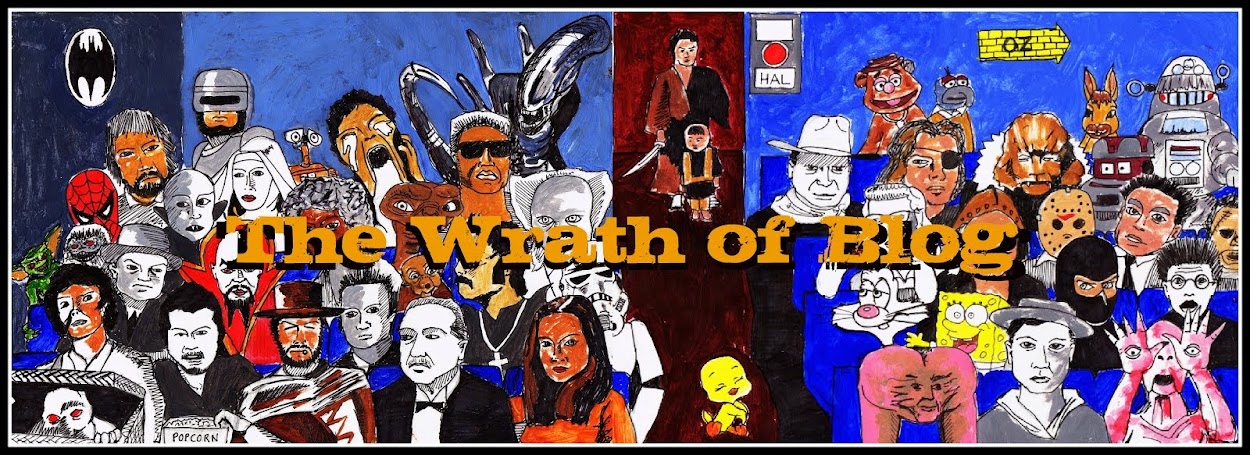 Wes Craven at this point in his career had made the notorious (and still quite shocking) debut, The Last House on the Left (1972), the mediocre, yet well known The Hills Have Eyes (1977) and the failed mystery, Deadly Blessing (1981) - amongst other inferior projects. He had yet to display his intelligent subversion of horror conventions that are now well known though the Scream franchise (1996 - 2011), but within the foundation of his slasher screenplay, was a concept inspired by a real-life mystery that he embellished, creating what is now an icon of the genre. Craven read in the newspapers about a young Asian boy who was fearful of sleep, telling his parents that someone was after him in his dreams. One night his physician father gave him sleeping pills, and the boy violently died in his sleep. So, what if there was someone attempting to kill a group of teenagers in their sleep? Well, it would surely make for an interesting narrative, and one that would equally be frightening, smart and original.
Wes Craven at this point in his career had made the notorious (and still quite shocking) debut, The Last House on the Left (1972), the mediocre, yet well known The Hills Have Eyes (1977) and the failed mystery, Deadly Blessing (1981) - amongst other inferior projects. He had yet to display his intelligent subversion of horror conventions that are now well known though the Scream franchise (1996 - 2011), but within the foundation of his slasher screenplay, was a concept inspired by a real-life mystery that he embellished, creating what is now an icon of the genre. Craven read in the newspapers about a young Asian boy who was fearful of sleep, telling his parents that someone was after him in his dreams. One night his physician father gave him sleeping pills, and the boy violently died in his sleep. So, what if there was someone attempting to kill a group of teenagers in their sleep? Well, it would surely make for an interesting narrative, and one that would equally be frightening, smart and original.On the surface, Nightmare is a straight forward story about revenge. Krueger hunts the teenage children of the parents who had burned him alive. A child molester and killer (the molestation angle was diluted for the film due to the McMartin pre-school trial that was breaking in the media at the time), Krueger had escaped imprisonment due to a technicality, so the parents of Springwood created a vigilante mob to track him down and deal out justice on their own terms. As Nancy (Heather Langenkamp) and her friends begin to describe the razor-fingered, red-and-green-sweater-wearing figure invading their dreams, the conspiracy surrounding him, and the secrecy kept by the parents begins to unravel. Elm Street is a place where the parents (or the forefathers of the United States) hide the sins of the "father" from the younger generation. Like the omni-present rise of a new conservatism in Reagan-era politics, America desperately felt the need to hide the fundamental violence that created the nation.
In this context, Krueger represents America's violent past, from the decimation of native Indians, through the depravity of civil war, to the embarrassment of the failed war in Vietnam. Reagan wanted to present the nation as a clean-cut, progressive society, and with the religious right now on his side (before 1980, state and religion were separated by the constitution, until Republicans realised the number of voters that could be gained by "preaching" god and country into their policies). In the first real introduction of Krueger proper in the film, the young Tina (Amanda Wyss) stands in an alleyway, and he enters at the other side, his Fedora hat in silhouette, he stands like a figure from the old western frontier, the music suggests the genre conventions of a John Ford film. But this is an outlaw figure twisted to reveal to the youth of the '80's that they are no longer able to believe the lies and deceits of parent and government. But Krueger is also a spectre of the past, who will correct the wrongs by eliminating the future, tearing apart the fabric of the fallacy created to whitewash any infractions of history.
I first saw A Nightmare on Elm Street on video in 1985 (a friends brother rented it for us - I was 9), and it was one of the first modern horror films I was introduced to. To be honest it was a bit of a revelation, and I can easily state that it probably changed my life, in the sense that I saw a film that played with film form, and presented the concept and atmosphere of a dream/nightmare in such a primal and effective way. It is certainly a film that has stayed in my sub-conscious ever since. The impact of the film, and its central, monstrous conceit (Krueger), has been watered down with seven inferior sequels (which will be reviewed on The Wrath of Blog over the next few months), and has therefore lost the thing that made it work on so many levels. But, watching this film as a stand alone narrative, it still has a powerful, deeply disturbing idea - we all sleep, we all dream. What if that activity that we all need to survive could kill you? The only real failure of this first movie is the multiple, farcical endings that time has been unkind to. It seems that director and producer, Robert Shaye, were unable to agree on a suitable end, but resolved to use them all. But it is still a film of interesting beauty and mood, and a film that I will no doubt return to in the future.
Directed by: Wes Craven
Starring: John Saxon, Ronee Blakley, Heather Langenkamp, Johnny Depp, Robert Englund
Country: USA
Rating: ****
Marc Ivamy



No comments:
Post a Comment